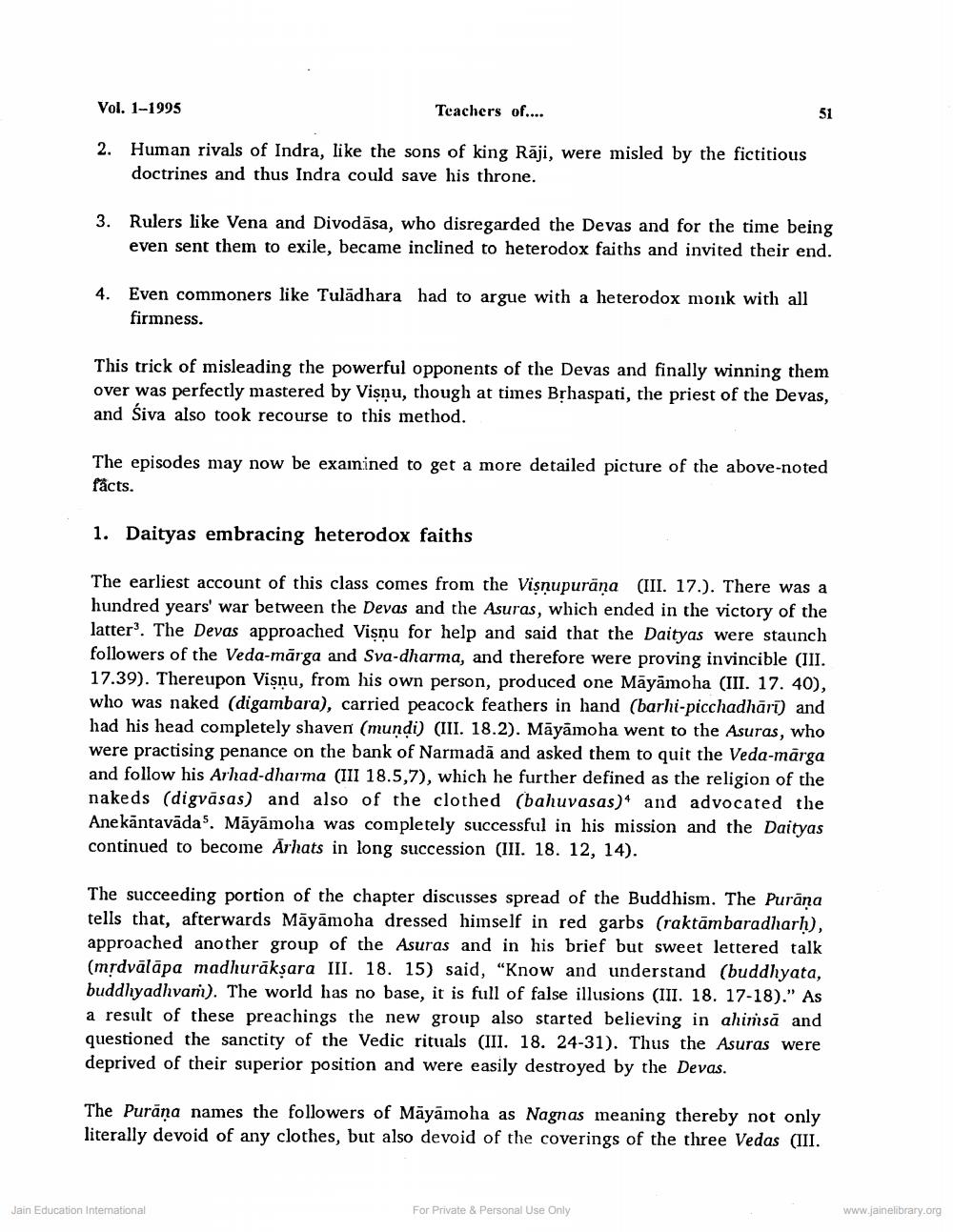________________
Vol. 1-1995
Teachers of....
2. Human rivals of Indra, like the sons of king Rāji, were misled by the fictitious
doctrines and thus Indra could save his throne.
3. Rulers like Vena and Divodāsa, who disregarded the Devas and for the time being
even sent them to exile, became inclined to heterodox faiths and invited their end.
A.
Even commoners like Tuladhara had to argue with a heterodox monk with all firmness.
This trick of misleading the powerful opponents of the Devas and finally winning them over was perfectly mastered by Vişnu, though at times Brhaspati, the priest of the Devas, and Siva also took recourse to this method.
The episodes may now be examined to get a more detailed picture of the above-noted facts.
1. Daityas embracing heterodox faiths
The earliest account of this class comes from the Visnupurāņa (III. 17.). There was a hundred years' war between the Devas and the Asuras, which ended in the victory of the latter. The Devas approached Visnu for help and said that the Daityas were staunch followers of the Veda-marga and Sva-dharma, and therefore were proving invincible (III. 17.39). Thereupon Vişnu, from his own person, produced one Māyāmoha (III. 17. 40), who was naked (digambara), carried peacock feathers in hand (barhi-picchadhāri) and had his head completely shaven (mundi) (III. 18.2). Māyāmoha went to the Asuras, who were practising penance on the bank of Narmadā and asked them to quit the Veda-marga and follow his Arhad-dharma (III 18.5,7), which he further defined as the religion of the nakeds (digvāsas) and also of the clothed (bahuvasas)4 and advocated the Anekantavādas. Māyāmola was completely successful in his mission and the Daityas continued to become Arhats in long succession (III. 18. 12, 14).
The succeeding portion of the chapter discusses spread of the Buddhism. The Purāņa tells that, afterwards Māyāmoha dressed himself in red garbs (raktāmbaradharh), approached another group of the Asuras and in his brief but sweet lettered talk (mrdvālāpa madhurāksara III. 18. 15) said, “Know and understand (buddhyata, buddhyadhvan). The world has no base, it is full of false illusions (III. 18. 17-18)." As a result of these preachings the new group also started believing in ahimsă and questioned the sanctity of the Vedic rituals (III. 18. 24-31). Thus the Asuras were deprived of their superior position and were easily destroyed by the Devas.
The Purāņa names the followers of Māyāmoha as Nagnas meaning thereby not only literally devoid of any clothes, but also devoid of the coverings of the three Vedas (III.
For Private & Personal Use Only
www.jainelibrary.org
Jain Education International




